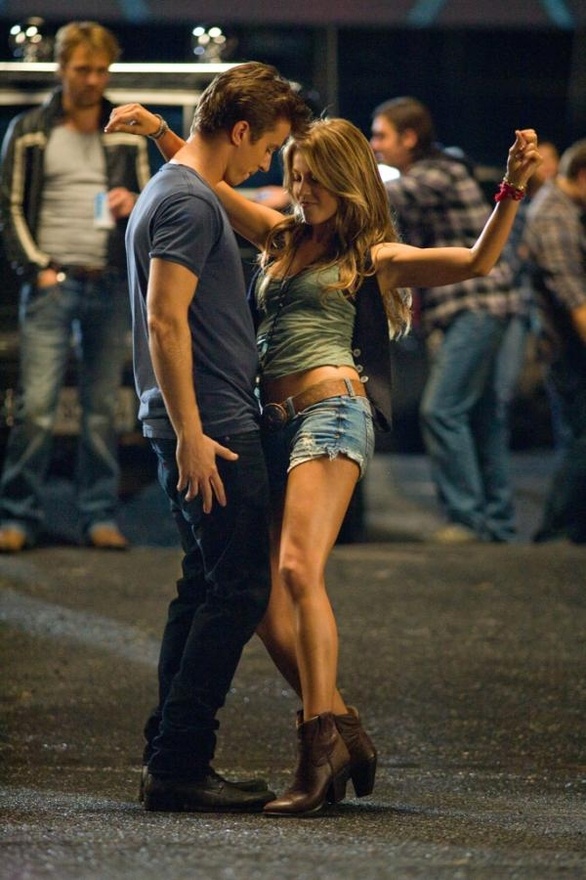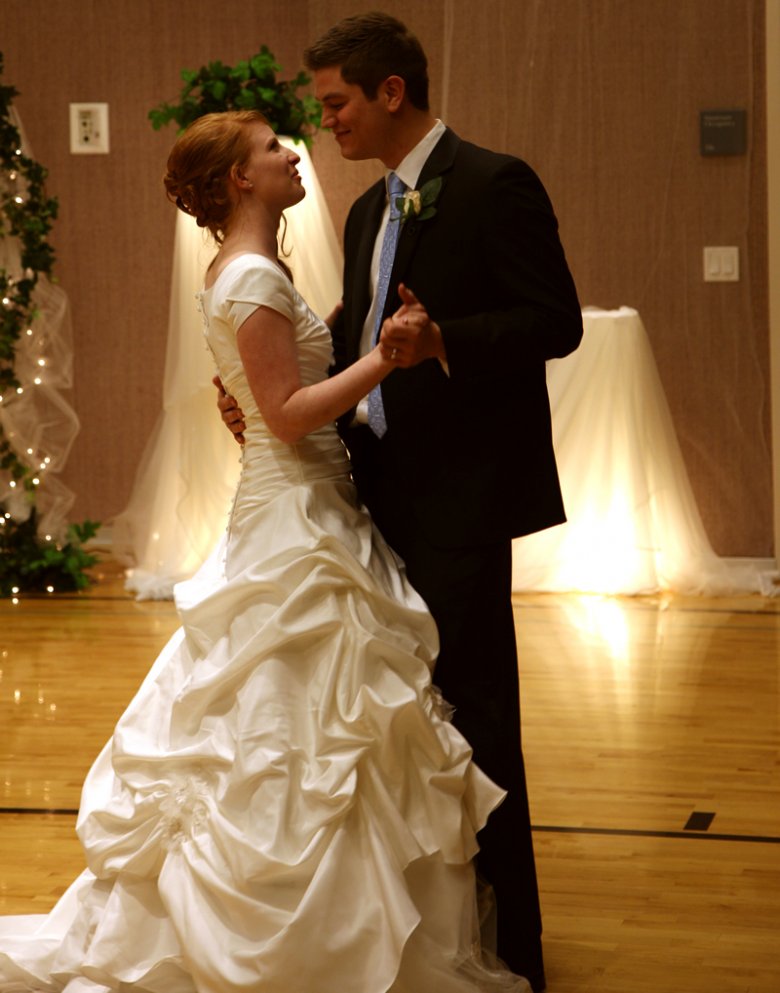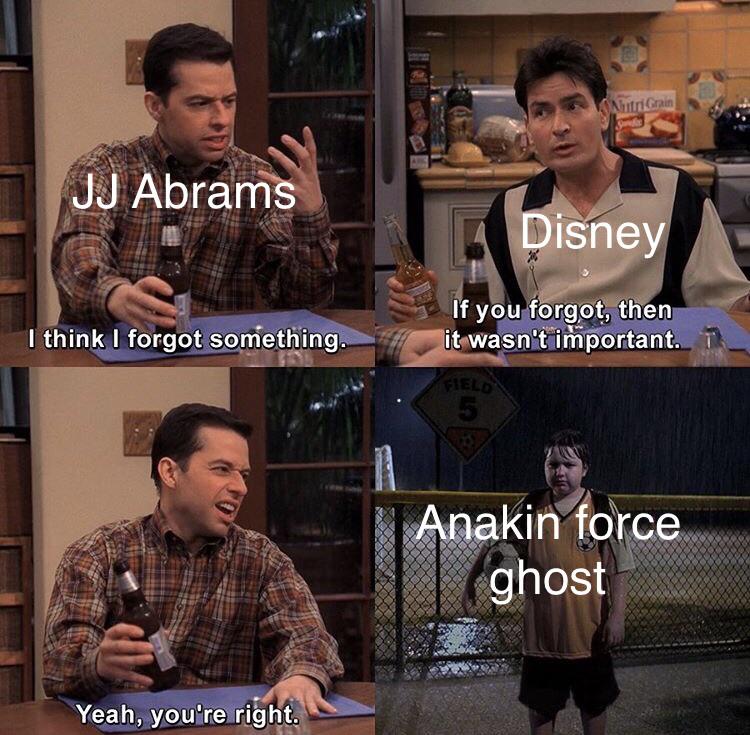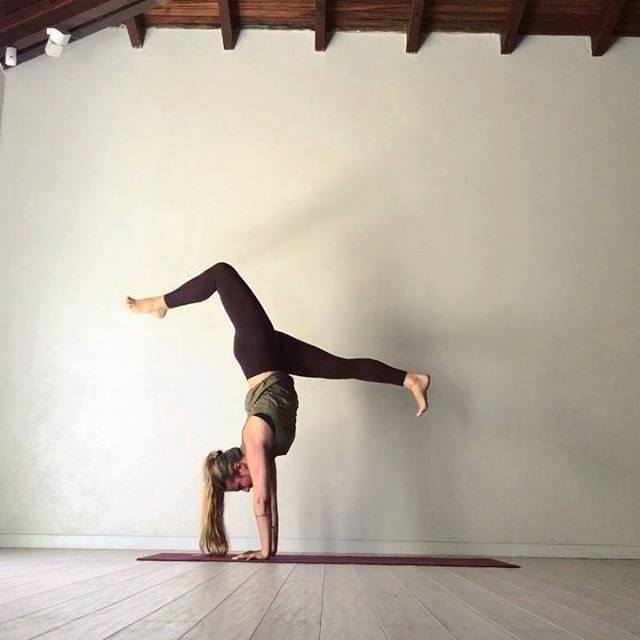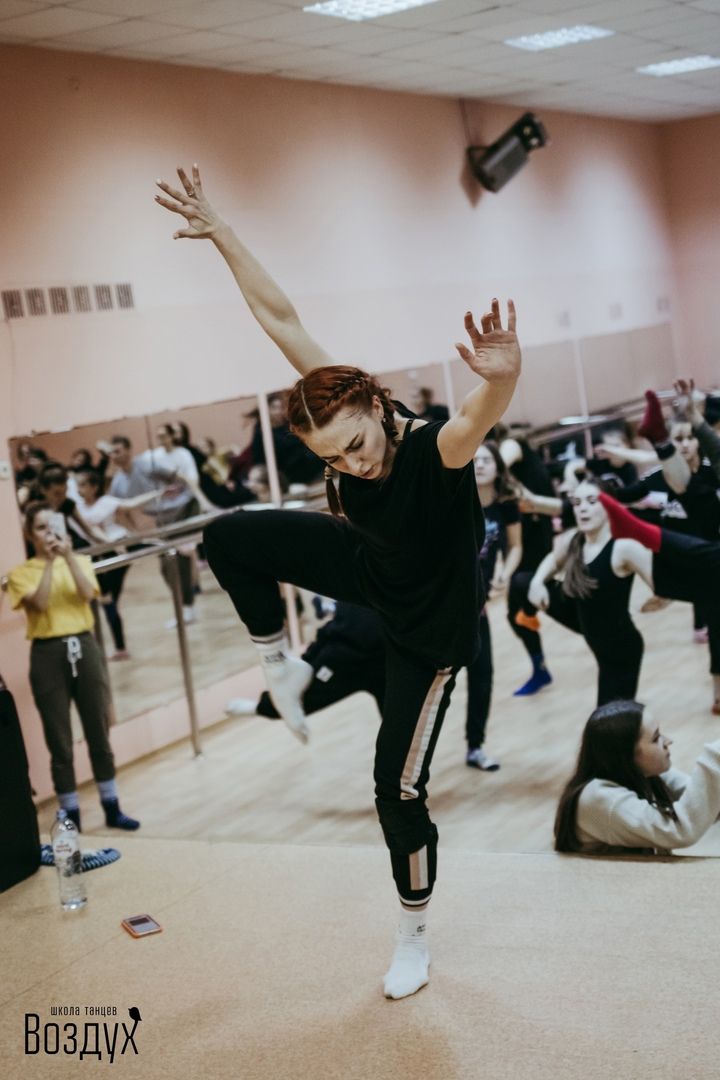How to dance at a function
How to Dance at a Club or Party
You probably know people who can dance at a club without a second thought.
They just go out, have a few drinks, get down on the dance floor, and have a great night.
Meanwhile, you're seized by panic and insecurity just thinking about dancing at a club.
And whenever you do drag yourself out, you stay glued to the wall and watch everyone else let loose on the dance floor.
But guess what? Those awkward feels are completely normal. And we PROMISE you can overcome them!
Follow these 5 simple steps and never worry about feeling left out again.
1. Find the beat/rhythm as you make your way towards the dance floor
Don't expect yourself to bust out a Step Up routine out of nowhere as soon as you step foot on the dance floor.
This isn't a movie! Start small – really small – by just bobbing your head to the beat.
Do this before you even get on the dance floor. Think of it this way: Music is the one thing that lubricates the whole experience of being at the club.
It sets the mood as soon as you walk in until the moment you walk out. You have to be comfortable with the music first.
So start interacting with the music right away. You can listen and nod your head a you're holding your drink, hanging with a friend, or even sitting down.
This is an easy way to set yourself up for success on the dance floor before you even start dancing.
Your body will already have a handle on the rhythm, so you're more likely to stay on beat by the time you do get your feet steppin'.
Watch this video to learn how to find and count beats in music:
2. Start with a small bounce / groove
Once you're on, or around, the dance floor, start bouncing with your whole body.
Think of this bounce as a bigger version of your head bob. You're still moving to that same rhythm, but now with your knees, core, and chest.
You know how a baby bounces on his knees when he hears a song he likes? Like that, but not as jolt-y.
Ease into those bounces calmly, then slowly build up your energy. This helps make your dancing look more natural.
Carlo Darang describes what a bounce / groove is in this video:
3. Learn simple steps
Got a handle on the music? Great.
Started bouncing with your body? Check. Now, let's get your feet moving!
But wait – you won't know which foot to step where without any practice.
So learn a few basic dance steps before you go to dance at a club.
This video will teach you how to do 3 basic dance moves that work with any song:
Wanna learn more basic party moves like these?
Check out Bianca's "Intro to Dance" program on STEEZY Studio! It'll teach you everything you need to know to get down on the dance floor.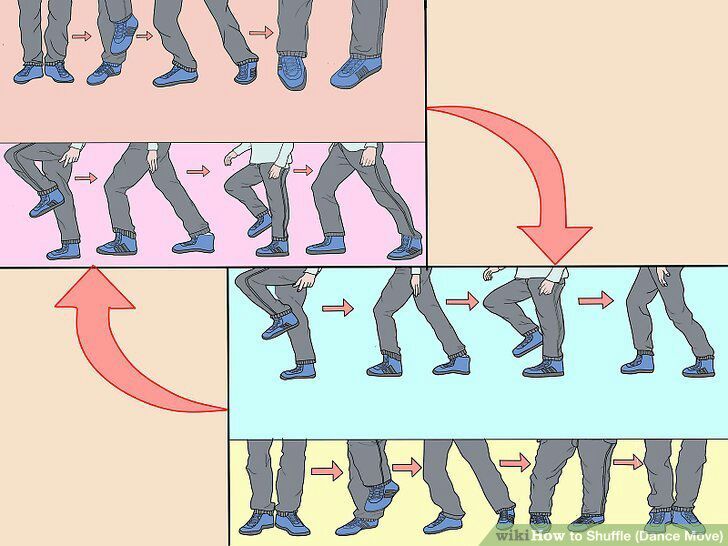
Click here to take the first 4 classes for free.
4. Let loose
Now that you've got the basics of dance down, it's time to put on a few finishing touches to make sure you look comfortable and confident with every move.
These quick tips will help you refine your dancing so you look more loose, groovy, and comfortable:
5. Join the party
By this point, you've got a handle on dancing 1. on beat 2. with your whole body 3. using steps.
But you didn't come to dance at a club to do all this alone!
Once you have that base, dance with the people around you.
If you're in a crowd or a group of friends, then you can play off of their movements and energy.
Mimic the moves your friends are doing, lip sync with them, rap Nicki's entire verse in Motor Sport from memory.
And if the DJ or song lyrics tell you to do something (like put your hands up or jump), then do it!
These are little things you can't predict or practice – remember that you're out to have fun, not to play DDR in your head.
Grinding (or whatever you call it) on someone is its own topic – but whether you're dancing with one person or a whole group of people, the most important thing to do is to... Stay in rhythm!
You and your partner or friends could be doing totally different things. They could be jumping while you're pumping your arms.
She could be swaying side to side as you're 2-stepping.
But as long as you're moving to the same beat, it'll still feel like you're dancing together.
(The closer you physically get, though, the more similar you want your movements to be so that you don't end up hitting each other or creating friction between your moves. Dance with them!)
---
I hope these tips help you kiss those insecurities goodbye!
Follow these 5 steps and you'll realize that it's possible, and actually quite easy, to dance at a club.
You just need the right resources, some practice, and a dash of confidence. ;)
Have fun!
dance | Definition, Characteristics, Types, History, People, & Facts
Pieter Bruegel the Elder: Peasant Dance
See all media
- Key People:
- Igor Youskevitch Pyotr Ilyich Tchaikovsky Claudio Monteverdi Igor Stravinsky Sergey Prokofiev
- Related Topics:
- Western dance Latin American dance ballet folk dance Native American dance
See all related content →
Summary
Read a brief summary of this topic
dance, the movement of the body in a rhythmic way, usually to music and within a given space, for the purpose of expressing an idea or emotion, releasing energy, or simply taking delight in the movement itself.
Dance is a powerful impulse, but the art of dance is that impulse channeled by skillful performers into something that becomes intensely expressive and that may delight spectators who feel no wish to dance themselves. These two concepts of the art of dance—dance as a powerful impulse and dance as a skillfully choreographed art practiced largely by a professional few—are the two most important connecting ideas running through any consideration of the subject. In dance, the connection between the two concepts is stronger than in some other arts, and neither can exist without the other.
Although the above broad definition covers all forms of the art, philosophers and critics throughout history have suggested different definitions of dance that have amounted to little more than descriptions of the kind of dance with which each writer was most familiar. Thus, Aristotle’s statement in the Poetics that dance is rhythmic movement whose purpose is “to represent men’s characters as well as what they do and suffer” refers to the central role that dance played in classical Greek theatre, where the chorus through its movements reenacted the themes of the drama during lyric interludes.
The English ballet master John Weaver, writing in 1721, argued on the other hand that “Dancing is an elegant, and regular movement, harmoniously composed of beautiful Attitudes, and contrasted graceful Posture of the Body, and parts thereof.” Weaver’s description reflects very clearly the kind of dignified and courtly movement that characterized the ballet of his time, with its highly formalized aesthetics and lack of forceful emotion. The 19th-century French dance historian Gaston Vuillier also emphasized the qualities of grace, harmony, and beauty, distinguishing “true” dance from the supposedly crude and spontaneous movements of early man:
Britannica Quiz
Pop Culture: Fact or Fiction?
Where did Legos originate? Was Marilyn Monroe married to a writer? And how much do you really know about the Muppets? Test your pop culture pizzazz with this fact or fiction quiz.
The choreographic art . . . was probably unknown to the earlier ages of humanity.
Savage man, wandering in forests, devouring the quivering flesh of his spoils, can have known nothing of those rhythmic postures which reflect sweet and caressing sensations entirely alien to his moods. The nearest approach to such must have been the leaps and bounds, the incoherent gestures, by which he expressed the joys and furies of his brutal life.
John Martin, the 20th-century dance critic, almost ignored the formal aspect of dance in emphasizing its role as a physical expression of inner emotion. In doing so, he betrayed his own sympathy toward the Expressionist school of modern American dance: “At the root of all these varied manifestations of dancing . . . lies the common impulse to resort to movement to externalise states which we cannot externalise by rational means. This is basic dance.”
Get a Britannica Premium subscription and gain access to exclusive content. Subscribe Now
A truly universal definition of dance must, therefore, return to the fundamental principle that dance is an art form or activity that utilizes the body and the range of movement of which the body is capable. Unlike the movements performed in everyday living, dance movements are not directly related to work, travel, or survival. Dance may, of course, be made up of movements associated with these activities, as in the work dances common to many cultures, and it may even accompany such activities. But even in the most practical dances, movements that make up the dance are not reducible to those of straightforward labour; rather, they involve some extra qualities such as self-expression, aesthetic pleasure, and entertainment.
Unlike the movements performed in everyday living, dance movements are not directly related to work, travel, or survival. Dance may, of course, be made up of movements associated with these activities, as in the work dances common to many cultures, and it may even accompany such activities. But even in the most practical dances, movements that make up the dance are not reducible to those of straightforward labour; rather, they involve some extra qualities such as self-expression, aesthetic pleasure, and entertainment.
This article discusses the techniques and components of dance as well as the aesthetic principles behind its appreciation as an art. Various types of dance are discussed with emphasis on their style and choreography. The history of dance in various regions is treated in a number of articles; see dance, African; music and dance, Oceanic; dance, Western; arts, Central Asian; arts, East Asian; arts, Islamic; dance, Native American; arts, South Asian; and arts, Southeast Asian. The interaction between dance and other art forms is discussed in folk dance.
The interaction between dance and other art forms is discussed in folk dance.
Dances
Author: Pavel Gather
Psychologist, Lecturer Salsa and Tango
Dances
Author: Pavel Pavel
Psychologist, Lecturer Salsa
on At the start, you always want to get a quick result. When it doesn't happen, the hypothesis arises that everything takes time. After a conditionally acceptable time, humility comes to mastering pair dances, which, perhaps, is not given, and I will just do what I learned somehow.
This is the most common story of those who believe that the mere act of attending a pair dance class is enough to learn how to dance.
Absolutely not. If you want to really dance well, you have to make an effort outside of the dance class. A good teacher will definitely be needed, but the initiative should be on your side.
1. Listen to music
The most common and accessible advice that is given already in the first lessons. And it definitely works. Music creates a certain atmosphere of the dance and intuitively you want to move to it. It doesn't matter where you listen to music - in the car, on headphones while walking or doing household chores.
An addition that will help you dance better is your active participation in the music. Sing along, dance or simply beat musical accents with any free parts of the body. In the subway, for example, it is enough to tap out bright moments with your fingers, in the car to sing along with sounds, and at home you can jump for pleasure.
2. Watch videos of good dancers
It's complicated, but also obvious. It’s more difficult, because without recommendations from more experienced dancers, unfortunately, it’s not so easy to find a good quality video on the net (I mean not the resolution quality, but the content itself).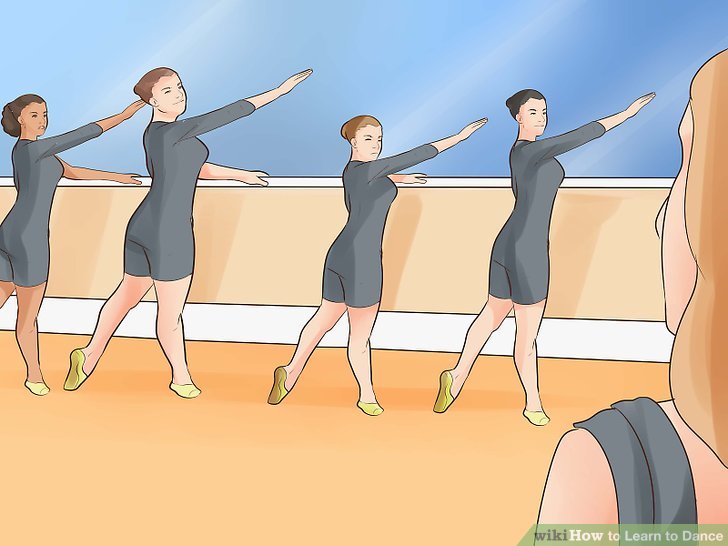
Meaningful viewing of the video is to form an understanding of HOW the dancers make this or that impression on the partner or the viewer. Technology is at the heart of everything. Understanding how the pros do it is a big step forward.
It is important to distinguish between a show and a disco dance, a choreographed performance from an improvisation, a stylized dance from an authentic one, etc. Ask for recommendations and dance instructors will always upload a couple of videos of worthy landmarks.
Tango Z. Showreel.
Online modern tango courses
Tango nuevo is the most advanced version of tango. We can quickly learn to dance from zero to a steep level.
| View details |
3. Dance in salsatecas/milongas/discotheques
A very delicate moment when it is worth coming to the first party. From a technical point of view, most students in 1-3 months have a sufficient set of figures and techniques to come and dance calmly.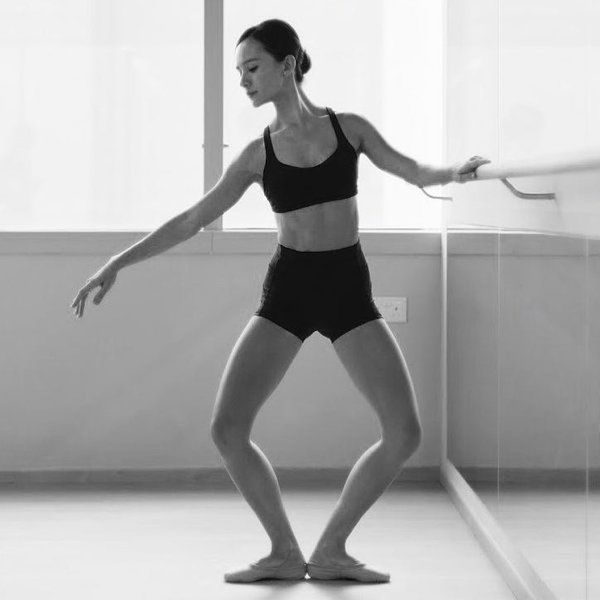 Psychologically, the same moment can be stretched out for an indefinite time. After all, it is imperative to “not lose face”, “learn more figures” and be sure what to do in case “there is an unfamiliar movement”.
Psychologically, the same moment can be stretched out for an indefinite time. After all, it is imperative to “not lose face”, “learn more figures” and be sure what to do in case “there is an unfamiliar movement”.
In fact, the partygoers don't really care (except for a small layer of non-professional teachers who want to help inexperienced dancers by treating them as customers in the future). It is important to come and try dancing after a month of classes. You can only with friends or guys from your group. This will be enough to feel the adrenaline and inspiration from the dance.
4. Dance with partners or partners not of your level
The conventional wisdom that you need to practice in groups of your level does not withstand the test of experience. Perhaps now your eyes widened in surprise, and you want to meaningfully read the phrase again. Yes, you saw everything correctly: when you dance with a partner of your level, you don’t grow anywhere.
It's important to understand that not only does it work one way and you have to dance with cooler dancers, but it works even more effectively the other way. It is no coincidence that teaching pair dances dramatically raises the level of the teacher himself. You have an endless stream of very beginner dancers.
How it works. A more experienced partner needs to be "stretched". It's easy and obvious. With beginners, you need to take more initiative on yourself, see the general pattern of the dance more widely, turn on and insure more, try to be an example and be more careful. The quality of interaction begins to grow significantly. And wonderful partners too.
Dancing with partners of your level doesn't make you grow. Dance with both beginners and more advanced dancers
Dominican Bachata Women's Style Online Course
Want to learn how to hypnotize those around you with the most appetizing part of your body? On the course we will tell you all the secrets.
| Interesting |
5. Learn to dance for a partner and for a partner
Turks and Argentines are one of the best partners in the world. In Russia, partners are highly valued. Why? The answer is simple. In Argentina and Turkey, it is not questionable for men to ask another man to lead in one piece or another and give feedback on the quality of the lead. For them, it will be a great shame to hear moralizing from a partner, or even more so to be known in the community as an insecure partner.
In Russia, due to the constant, often far-fetched, opinion that there are more women in pair dances, partners calmly get up and study their partner's part. Such partners then grow into very cool dancers and teachers. In no case do this at parties, only in class. Here we are talking only about the learning strategy. At parties, be yourself.
6. Do not memorize the links
Always try to look deeper and understand the through principle and idea of movement.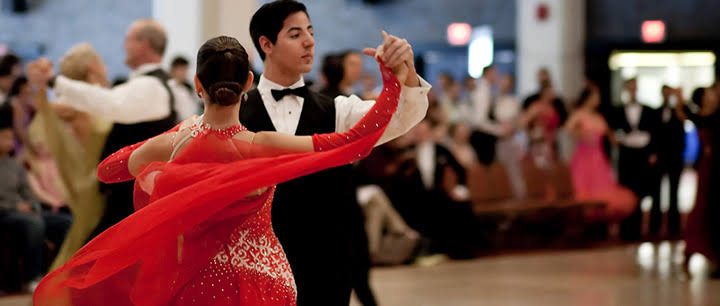 Understanding what and how is done will make it possible to independently generate any sequences and chips.
Understanding what and how is done will make it possible to independently generate any sequences and chips.
Human memory is limited and there will always be a moment when something will escape and your repertoire will be limited by the size of RAM.
In Argentine tango, for example, there are seven levels of movement formation that, when mastered, will allow you to make millions of combinations. And how many dance sequences can you really remember? In rueda, more than 150 figures dance in a rare circle. It's hard to keep more in mind.
7. Develop your body
Many years of experience in teaching couple dance shows that as soon as everyone pairs up in a class, any progress in individual style ends. But it is the individual style that distinguishes everyone at the disco: partners change, and style is always with you.
The body as the main instrument of dance must be very plastic, responsive and emotional. Surprisingly, not all pair dance schools have a general physical warm-up. It is vital to tune the body and understand how it works.
It is vital to tune the body and understand how it works.
You can always train extra and concentrate more on the basic steps, as their true value is as body work. The sequence of steps is, in fact, the simplest thing that can be in pair dancing. The quality of individual performance determines the craftsmanship.
8. Try on the images of inspiring dancers
A psychological life hack for those who have already mastered the steps, but still feel that there is not enough brightness and drive. Most are terribly afraid of being someone else's "clone". Here the action is the same as under the influence of hypnosis - the more you resist, the more you plunge into an altered state of consciousness.
With a high degree of probability, you are already dancing like someone else's "clone". A meaningful fitting of someone else's image is that you mentally take the image of the one who inspires you (inspiration is critical in this case) and "put on" yourself. Then you start dancing and trying to feel in general how it is to be able, for example, to be the best partner or the sexiest partner in a disco. This is much more difficult than it seems. But it works extremely efficiently.
Then you start dancing and trying to feel in general how it is to be able, for example, to be the best partner or the sexiest partner in a disco. This is much more difficult than it seems. But it works extremely efficiently.
9. Dance to offbeat music
Habitual rhythms keep you tight. Tango salon or speedy timba leave little room for experimentation and fantasy. Pattern dancing is always noticeable and is reserved for beginners.
The truly new is born outside of the usual. Look for places to experiment. If there is no place, organize self-training. The main thing is not to get carried away, because music determines the style. We bring something new to pair dances, rather than trying to change them.
Search, improvise, don’t be afraid to go beyond, develop in different directions, be inspired by music atypical for the style
10. Try your hand at basic dance directions
dances exist according to their own non-choreographic laws.
This is the deepest delusion, which has turned into a ceiling for the qualitative development of partner dances. After all, all professional dancers, for example, in salsa or bachata, build their ideas on the basic choreographic principles.
Do not think that choreography is only applicable on stage. Any meaningful movement of the body can be choreographic. In general, try classical or modern choreography. Basically, hip-hop can work too.
11. Look for battle sensations
Pair dances return us to an active position of manifestation of our body. As in the days of our ancient ancestors, we impress the members of the opposite sex by how dexterous, hardy, sexy, etc. we are. Modern laws of the jungle in the entourage of big cities.
If you look around the dance floor, it becomes clear that the majority are clearly herbivores (not in the sense of vegetarians, but in relation to those around them). I am sure that predators are always more interesting in terms of the attractiveness of the image - try to find a counterbalance among herbivores, for example, a cat woman or a lion man.
I am sure that predators are always more interesting in terms of the attractiveness of the image - try to find a counterbalance among herbivores, for example, a cat woman or a lion man.
The conversation is about an internal position, not about aggressiveness. Lability and lack of control are inherent in adolescents, and not in adult self-sufficient people.
Accordingly, even a training or friendly battle gives, on the one hand, practical skills - to make a bright sequence of movements, bring an idea to a climax, show a spectacular feature, on the other hand, develops the psychological basis of the dance - self-confidence, resistance to extraneous attention, self-control and self-control in complex elements.
12. Communicate with professionals
The environment shapes the internal position. Basically, real passionaries of the dance community are ready to openly talk, discuss and support the development of dance in every possible way. Universal principles and the ideas they articulate have a much longer and more practical perspective than meets the eye.
Universal principles and the ideas they articulate have a much longer and more practical perspective than meets the eye.
Accept that, for example, behind the words "listen to your partner" is not only a beautiful metaphor, but also a practical skill to literally listen to your partner. At the same time, always treat every thought, even the most respected teacher, as a private opinion.
Your skill will lie in finding the scope of the idea even in conflicting opinions. Most often, the contradiction is speculative and the truth lies in the angle of perception or situationality.
Your dancing growth will stop sooner or later. This can happen at the level of three basic steps or years of experience in teaching and show performances. Regardless of your level, the suggested 12 life hacks can get you off the ground and greatly accelerate your dance growth. There is no way here without your motivation and activity. Take your dance development into your own hands. 9Ol000 Dangerous sexuality
Salsa: destroyers of stereotypes
Couple dancing as a source of strength.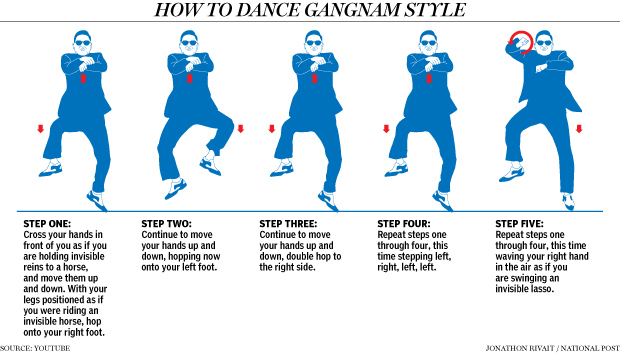
Self-destruction of the couple dance community
The Salsa series as a mirror of the community
Mamita Fridays: salsa, bachata
Destroying the myths about leading pair dances
Does dancing make us better?
The seven deadly sins of teachers
Why we will never dance bachata like the Dominicans
Why tango?
Dispute over musicality
Selection of dances according to alcohol preferences
Where to find inspiration for dancing?
Terrible tango nuevo
Distribution of roles in a salsa party
Argentinean tango through the eyes of a salsa dancer
Is there a predisposition to dancing?
Which is more effective: individual or group lessons?
Sexual overtones in couple dances
Extra-curricular event "Meeting with dance"
Goals of the event:
- To expand the understanding of dance, to introduce dances that occupy a worthy place in the history of dance art.

- To develop the creative abilities of children.
- Ability to communicate in a microclimate.
- Creation of a wide aesthetically organized environment around children, inspired by art and contributing to their spiritual development.
- To educate in children a love of music, a sense of rhythm, musical memory, to educate aesthetic taste.
Event progress
Narrator 1: Even in the provinces of the same state, the dance changes. The northern Russian does not dance like a Little Russian, like a southern Slav, like a Pole, like a Finn: one has a speaking dance, another is insensitive, one is furious, rampant, the other is calm, one is tense, heavy, the other is light airy. Where did such a variety of dances come from?
- It was born from the character of the people, their life and way of doing things.
Master 2 : The people lead a proud and abusive life, expressing the same pride in their dance; among a carefree and free people, the same boundless will and poetic self-forgetfulness are reflected in dances; the people of the fiery climate left the same bliss, passion and jealousy in their national dance.
Presenter 1: Speaking about the truths of dance art, about its connection with the life of the people, we involuntarily turn to a distant primitive era, where dance was directly connected with labor. Primitive people had high hopes for magical dances and believed that if you touch a dancing kangaroo with a stick, then the warrior will be lucky on the hunt. Even failure did not shake faith in the magical power of dance. Warlike dances were the pinnacle of dance art. Excellent organization, rhythmic unity and genuine animation distinguished them.
Leader 2 : In the dances of ancient times, we recognize the movements of animals, the actions of hunters. The dance reflects one's attitude to life, the desire to become the creators of one's life and destiny.
Presenter 1: Dancing in ancient Greece played a big role in instilling courage, patriotism, and a sense of duty in a young man.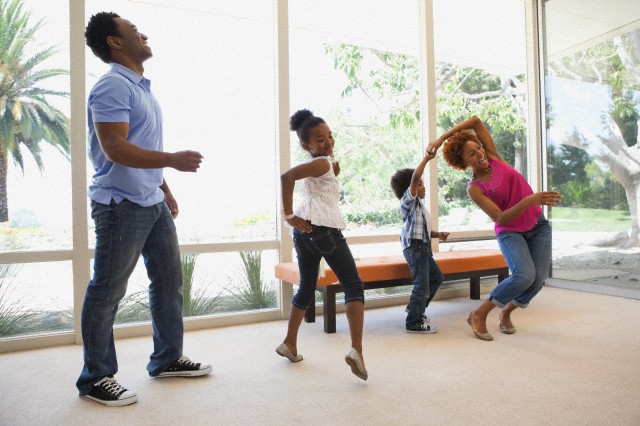
Leader 2: Ancient monuments of art, having preserved the image of dancers, give an idea of the development of dance. With the emergence of religion, a cult dance arose. Celebrations and dances dedicated to the sun were especially pompous.
Presenter 1: This is how freedom-loving people lived near the sea. Greece was their home. In the dance that they danced, "Sirtaki" is mainly elements built on steps, squats, turns. This dance depicted valiant warriors, protectors and husbands. All elements in the dance are used with extended lifts with a proud head and a taut body. Also in the bows and turns of the body, you can see the waves of the Aegean Sea.
Master 2 : The suit gave freedom of movement in the cloak, freely, fitting the figure from light airy fabric.
Children's fashion theater is demonstrating costumes.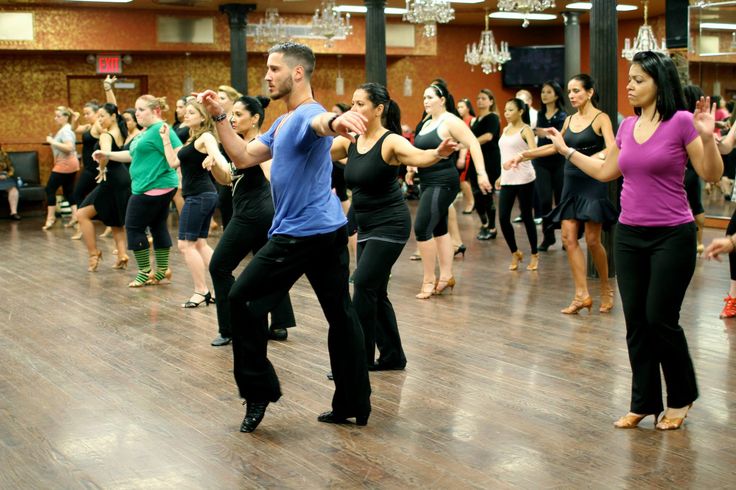
Presenter 2 : Now the dance "Sirtaki" will be performed for you by students of grade 5.
Leader 1: musicality, and captivating rhythm, and laid-back fun, and mutual respect of partners: the underlined caring courtesy of the gentleman and devoid of mannerisms, the modest responsiveness of the lady. That's when the dance, regardless of its name and geographical origin, will be good.
Leader 2 : Today we will talk about the costume in folk dance, its influence on dance movements.
Leader 1: During the 5th century in the given territory of the fallen Roman The empire was settled by tribes of barbarians - the Germans. They occupied the territory of modern states: Italy, France, Spain and Germany. But medieval culture prepared an extraordinary rise in the Renaissance.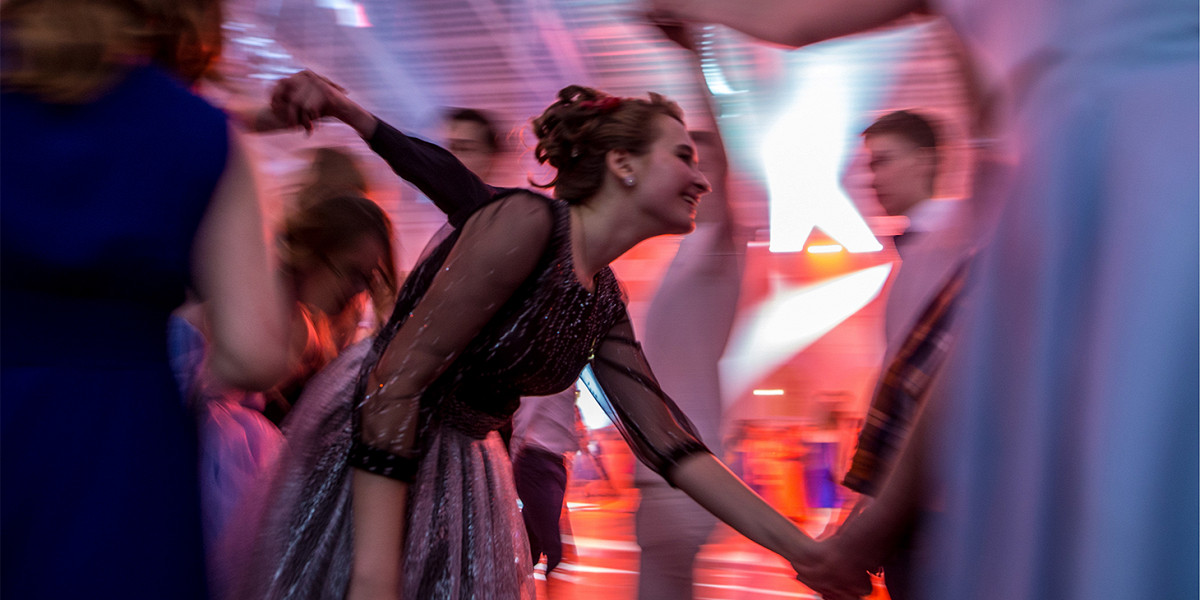
Leader 2 : Italy becomes the center of the craft - where silk weaving is widely developed. In the ornament there are a variety of patterns. The big difference was brightness, contrast. But the favorite color was red gold and blue. Ribbons and lace appeared in the decorations, bells served as decoration, corset lacing with ribbons. And since the XV century, Italy has become a trendsetter.
(A film is being shown. )
Leader 1: Tunic - short garment to the waist with lacing, which gives free movement of the arms, the sleeves were not sewn on, but tied to the armhole. Stockings - fitted the leg.
Leader 2 : Blouse - large neckline. Clothing - emphasizes the waist.
Presenter 1: It was the costume that left its mark on the "Italian Polka".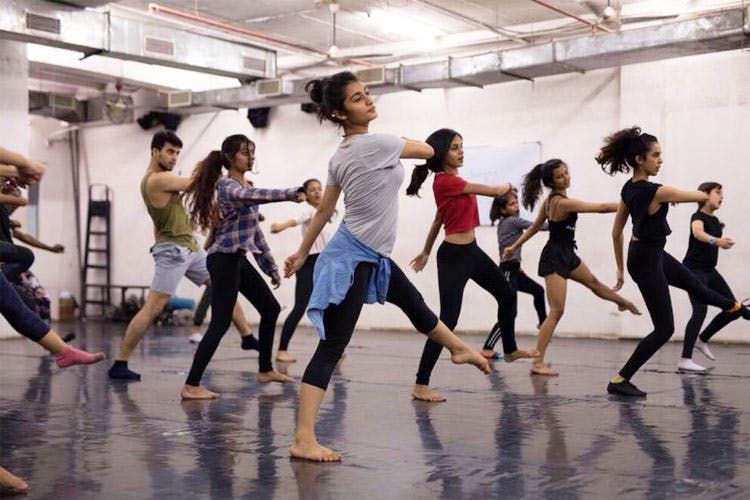 The suit made it possible to raise the leg high, to make various jumps. In movements clarity, strength and enthusiasm.
The suit made it possible to raise the leg high, to make various jumps. In movements clarity, strength and enthusiasm.
Leader 2 : But the polka dance itself originated in honor of the Polish Uprising of 1830-31. which aroused warm sympathy among the Czechs. It is with this event that the origin of the "Polka" is connected.
Presenter 1: From in the 1837s, only Polka was spoken of in Paris. It is danced at balls, in cafes, on the streets. There were vests and ties "A la Polka" and even a haircut "Polka". And the most passionate Polkom fans proposed calling 1840 the year of the Polka.
Host 2 : “It happened that the polka brought bad luck. One evening, two elderly people were having dinner at their home. Suddenly there was a crash, pieces of plaster fell, the ceiling crumbled, and two legs stuck out into the hole, dancing the polka. Paris has been discussing this story for a long time."
Paris has been discussing this story for a long time."
Leader 2 : A group of 4th grade children perform "Italian Polka".
Presenter 3: And now we will talk about Hungarian dance, the distinctive features of the costume and the nature of the performance. Hungary is located in central Europe. From north to south it is crossed by the main river - the Danube.
Leader 4: At the end of IX - X centuries. AD the regions along the middle reaches of the Danube were conquered by the nomadic tribes of the Hungarians or Magyars. Before coming to the Danube, the Hungarians had connections with the Eastern Slavs, as evidenced by some borrowings from the Slavic languages.
Leader 3: Until the end of the 19th century. Fabrics and clothes were made by rural craftsmen. There was a big difference between the rich and the poor; between noble and peasant clothes. The main difference is in the decorations and the quality of the clothes. But one thing distinguished all the costumes: colorfulness and variety. (Figure 1)
The main difference is in the decorations and the quality of the clothes. But one thing distinguished all the costumes: colorfulness and variety. (Figure 1)
(Picture No. 2)
Figure 2
Presenter 3: Great importance was attached to the headdress. Shoes and boots were decorated with embroidery. For men, trousers and vests are embroidered with cords.
(The costume is being demonstrated.)
Presenter 4: And today, on many holidays, people wear their national costumes.
Presenter 3: The dance expresses a strong spirit, arrogant and predatory people. The Hungarian dance is mainly dominated by various keys performed with the feet, snapping heels, various figure eights with the hands.
(Slide show in progress.)
Presenter 4: Year 6 children perform the Czardas Hungarian dance.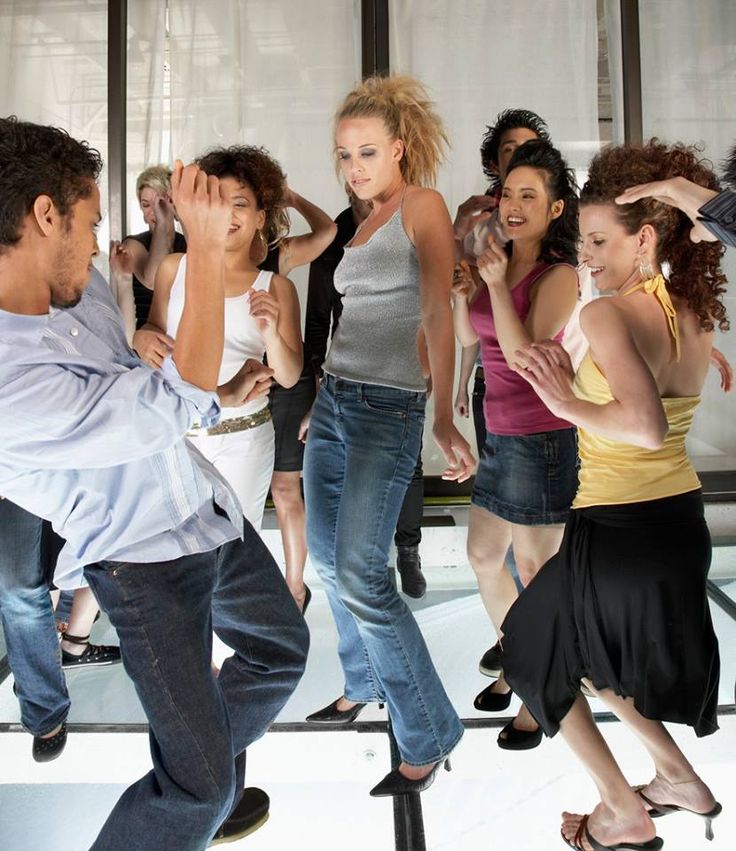
Presenter 1: In Russia, one of the favorite dances was "Quadrille". It has an even number of pairs. Initially, four people can dance.
Leader 2 : Ever since the end of the 18th century, the square dance has been one of the most popular and beloved dances of the Russian people. The quadrille was danced after a hard working day at gatherings and holidays.
Presenter 3: There are many types of square dancing. All of them are performed in their own style, melody. Sometimes, even in several districts of the same region, quadrilles are known that are completely different in the manner of execution.
Presenter 4: The ancient city square dance of the northern regions is characterized by a slow pace, smoothness in movement, simple and elegant design. In the male dance, calmness and restraint alternate with dashing and prowess.
Presenter 1: The south of Russia characterizes the dance with many stomps and jumps.
Presenter 2 : Modern square dances are characterized by provocative music, complex choreographic vocabulary.
Costume demonstration in progress. (Figure 3, Figure 4)
Figure 3
Figure 4
Children of the 3rd grade will perform a perky quadrille.
Host 1 : Dance is the most beloved mass art of our day. It is difficult to imagine a holiday without dancing, without fiery and fervent dances. For mutual understanding, it is not gentle to turn to the help of a dictionary or translator here. The rhythm of the dance, its captivating melody unite and create a constant festive atmosphere. Dance brings people together.
Dance brings people together.
Presenter 2: Another dance that I want to introduce you guys to is the waltz.
“A lot has been said about the waltz,
It is sung in songs and poems.
No matter how many dances there are
There is no dance more beautiful than a waltz.”
Presenter 1 : Several dances are considered to be the forerunners of the waltz: "Lendler", "Volt" and "Frant". Lendler was danced by the peasants of Austria. It represented sliding steps and turns at an average pace. In France, they danced the dance "Frant "- proud. They performed it calmly, gracefully. Smooth sliding movements and swaying of the body. In the Czech Republic they danced the folk dance "Volt" - it was a rotational movement.
Leader 2 : The word "waltz" means to spin, to glide. All these elements were combined in the new dance. Entering village weddings in the 18th century, passing along the roads of Europe, the waltz entered the halls of palaces. The ministers of the churches saw immorality in the vicinity of the dancers. There was a ban on the waltz: some were imprisoned and fined. But, in spite of any strictness, the people stubbornly performed the waltz.
Entering village weddings in the 18th century, passing along the roads of Europe, the waltz entered the halls of palaces. The ministers of the churches saw immorality in the vicinity of the dancers. There was a ban on the waltz: some were imprisoned and fined. But, in spite of any strictness, the people stubbornly performed the waltz.
Host 1 : Many royal courts were reluctant to allow the waltz to be danced, fearing they would lose the sophistication of court ladies. So, for example, Catherine the Great was against the waltz, and only after her death, it was introduced at the Russian court (1798d).
Music contributed to the wide popularity of the waltz. Waltz melodies by Mozart, Weber's Invitation to Dance, Schubert's sincere waltzes, elegant waltzes by Chopin, Glinka, Tchaikovsky are world famous.
Host 2 : Thanks to Strauss, the city of Vienna went down in history as the city where the waltz flourished - And in our time, at gala evenings, balls, concerts, artists perform the waltz.


